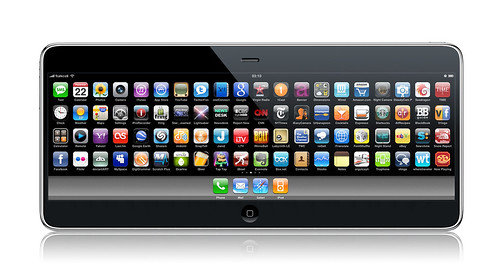Did Apple Copy Samsung?
By: Subhadeep Bhattacharjee
There is a famous saying in Hindi ‘Ulta Chor Kotwal Ko Daate’ or simply (the thief accuses the cop) but something similar seems to have happened between Apple Inc. and Samsung. And hey! The bone of contention is nothing other than the famous iPhone. Shhhhhhh! but there are rumours that Apple copied its famous iPhone design from Samsung. This might hurt the diehard Apple fans as the phone has a cult following across the world and thought to be a piece of style statement.
The funny part in this entire story is that it was Apple which had initially filed a lawsuit against Samsung over patent and trade dress infringements. It had accused Samsung of copying the iPhone while making its F700. But as it has turned out the Samsung F700 was displayed a good one year ahead of the iPhone’s launch in 2007. Although the phone wasn’t anything close to the iPhone in terms of looks, but a pioneer is a pioneer any day.
Why Samsung faltered with F700? The simple answer was it never considered Apple to be a competition and was busy taking on Motorola and Nokia and developing traditional eight button or 10 button navigation phones. F700 series and other smartphones were in the backburner till the launch of the iPhone. Once iPhone hit the market, Samsung pushed the productions of F700 but it only half ready and couldn’t take on the iPhone even though it had some features which we see on iPhone 3GS.
Some questions lay unanswered. If Apple did copy why did it risk its reputation and file a lawsuit against Samsung? If Samsung did develop it first why didn’t it raise a cry once iPhone made its debut into the market? The answer might lie with LG as it was the first manufacturer which had filed a complaint against Apple for copying designs of its Prada. Now we all know how much of dirty games goes on behind these amazing gadgets.
The funny part in this entire story is that it was Apple which had initially filed a lawsuit against Samsung over patent and trade dress infringements. It had accused Samsung of copying the iPhone while making its F700. But as it has turned out the Samsung F700 was displayed a good one year ahead of the iPhone’s launch in 2007. Although the phone wasn’t anything close to the iPhone in terms of looks, but a pioneer is a pioneer any day.
Why Samsung faltered with F700? The simple answer was it never considered Apple to be a competition and was busy taking on Motorola and Nokia and developing traditional eight button or 10 button navigation phones. F700 series and other smartphones were in the backburner till the launch of the iPhone. Once iPhone hit the market, Samsung pushed the productions of F700 but it only half ready and couldn’t take on the iPhone even though it had some features which we see on iPhone 3GS.
Some questions lay unanswered. If Apple did copy why did it risk its reputation and file a lawsuit against Samsung? If Samsung did develop it first why didn’t it raise a cry once iPhone made its debut into the market? The answer might lie with LG as it was the first manufacturer which had filed a complaint against Apple for copying designs of its Prada. Now we all know how much of dirty games goes on behind these amazing gadgets.
























